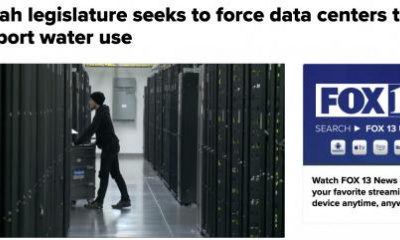Legislators commit to spending a half billion or more on Utah’s water
It took more than 150 years since pioneers first arrived in Utah to drop the level of the Great Salt Lake by 11 feet with development and diversion of its tributaries.
Utah’s lawmakers and advocates who are witnessing the effects of a historic West-wide drought on the lake say action must be taken to rectify the past, and soon, with substantive changes to policy, laws and money dedicated for restoration that are needed now.
These changes can’t wait 150 years or the legacy of the lake, just like its water and ecosystem, will have long withered away. In addition, lawmakers have targeted conservation in homes, farms and water delivery systems to make the state more water wise.
“We are not going to let our state go dry on our watch,” Senate President Stuart Adams, R-Layton, said during a press conference.
Added House Speaker Brad Wilson, R-Kaysville: “This is absolutely not a race we can afford to lose.”
On Monday, to underscore that message, the Utah Legislature declared this week as “Utah Water Week” and urged everyone to wear blue on Friday to show their support and solidarity on water issues facing the state.
Both Wilson and Adams said they expect this legislative session’s commitment on funding for water issues will equal or surpass what was allocated for 2022.
Last year, the Utah Legislature and Gov. Spencer Cox dedicated more than $500 million in funding aimed at boosting water conservation as the state and the rest of the West have struggled with record breaking heat and generally poor snowpack over the last two decades.
A dozen bills were passed by lawmakers, including a first-of-its kind measure by Wilson to establish a $40 million trust to shepherd restoration and water-saving efforts in the Great Salt Lake watershed.
Additionally, the bed of the Great Salt Lake — the eighth largest terminal saline lake in the world and the largest saltwater lake in the the Western Hemisphere — was recognized as “beneficial use” of water rights, giving it standing with other water right holders and the opportunity to receive more water without it being considered a “waste.”
The galvanized attention on the Great Salt Lake’s health and its expansive ecosystem are a nod to the reality that the lake has shriveled in size by half, and more than 800 square miles of its lakebed is now exposed.
In 2021, the lake dropped to its lowest level in recorded history, followed by a subsequent drop this summer.
Generous snowpack this winter has left some Utah basins at nearly twice the precipitation as what is average, increasing the lake’s level by one foot. That is helpful, but hydrologists warn it will take more than one good winter to rectify the conditions of the lake that contributes nearly $2 billion to the state’s economy each year.
Wilson and Adams said this year they aim to create a Great Salt Lake Authority to boost coordination and better streamline the efforts being made by seven distinct executive branches that are in some way touched by the Great Salt Lake.
They said the organization would be unique to Utah, harnessing the power of those entities.
In addition, lawmakers plan to pour millions into salinity management of the lake and also reinvigorate their dedication to funding agricultural optimization grants, which makes those systems better at conserving water resources.
Sen. Scott Sandall, R-Tremonton, is a fourth-generation farmer in Box Elder County and said the “fixes” to current systems save significant water through lining canals where seepage is happening and bringing producers into the fold of new technology.
“We put $75 million into the program last year,” Sandall said, and the needs outpaced the money available.
The state also plans to spend more money in a turf buy-back program to continue to encourage a cultural shift from green lawns to more water wise landscaping.
Adams said the water needs and problems in Utah are diverse and go beyond geographic and political boundaries, transcending from being just a northern Utah problem, a southern Utah challenge or an issue tied to rural or urban populations.
“In fact, this is not even a statewide problem. It is a multistate problem that deserves out of the box thinking and creative solutions and collaboration,” he said. “It deserves foresight.”

.jpg)







